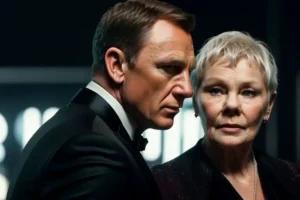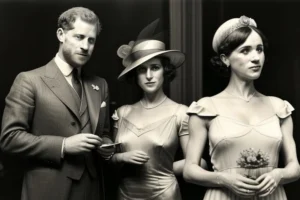Before we dive in, let me hit you with the highlights:
- Epic Animation: Tai Lung’s escape in Kung Fu Panda (2008) sets a visual standard, combining fluidity with emotional weight.
- Strategic Mastery: The smart storytelling, from Oogway’s prophecy to Tai Lung’s clever use of circumstances, highlights fate and free will.
- Cultural Impact: This scene transcends traditional prison breaks, resonating with audiences far beyond just kids’ movies.
Alright, settle in! Let’s talk about one of the most iconic cinematic experiences ever to come out of DreamWorks: the escape of Tai Lung in Kung Fu Panda. You might be thinking, “Is it really that great?”. Oh, let me tell you, it’s not just great—it’s the greatest animated prison escape of all time!
The Context: Setting the Stage for Greatness
Let’s roll back to the year of 2008. A time when optimism flowed like sweet tea, and animation was taking bold leaps forward. DreamWorks, known for its dazzling visuals and compelling storytelling, delivered a gem in Kung Fu Panda. This wasn’t just another kids’ movie; it was an artful blend of humor, heart, and, intriguingly, one of the best prison escape sequences in cinematic history.
Meet the Players
- Tai Lung: A fierce snow leopard, the coveted Dragon Warrior who turned rogue.
- Master Oogway: The wise old tortoise; the Gandalf of kung fu philosophy.
- Master Shifu: Tai Lung’s former mentor, who’s caught in a moral and ethical dilemma.
- The Furious Five: The ensemble of kung fu animals, providing both comic relief and martial prowess.
The Prophetic Word of Master Oogway
You know the memorable line, right? “One often meets their destiny on the road they take to avoid it.” This much-quoted gem sets the stage for everything that follows. As the scribe of fate, Oogway hints at the intricate paths our characters will tread.
Was it Really Fate?
- Master Shifu’s Decision: By sending a messenger duck (yes, a duck) to the prison, he inadvertently bumps up the guard count. Was this a splendid move or a complete rookie error?
- The Feather: It’s both comical and kind of brilliant. Tai Lung using a feather to pick locks illustrates a key concept—never underestimate the simplest tools.
And just like that, our antagonist picks a lock, setting into motion one of the most astounding escapes ever.
The Escape Sequence: A Masterclass in Animation
Now, let’s get into the nitty-gritty of Tai Lung’s prison break. The art and flow of that scene are astounding. It’s not just action; it’s an emotional symphony.
Why It Works
- Fluid Animation: The climbs, leaps, and turns are all so impeccably animated, you can’t help but feel your heart race.
- Character Dynamics: Tai Lung’s fury and desperation drive the scene. With every move, you sense the weight of his years trapped in a prison, making each leap resonate.
- Cinematic Technique: The angles, colors, and sound design are orchestrated brilliantly. Notice how shadows play off Tai Lung, giving the illusion of both strength and vulnerability.
A Deeper Dive: The Art Behind It
| Element | Description | Impact |
|---|---|---|
| Animation Style | Fluid, dynamic, and colorful | Engages viewers, creates a visual feast, elevates tension |
| Sound Design | Intense scores with rhythmic percussion | Heightened emotions, immerses viewers in the action |
| Character Emotion | Tai Lung’s frustration, anger, and desperation | Empathy builds with the audience, rooting for the “villain” |
Now, tell me, does that level of craftsmanship not elevate the whole experience of watching?
Tai Lung’s Skill: An Inspirational Display
Watching Tai Lung’s escape, you can’t help but feel a twinge of admiration. The way he tackles those walls and flips over guards—it’s mesmerizing!
Inspirational Quirkiness of Kung Fu
Let’s break down his movements:
- Leaps: Every jump mirrors his struggles, emphasizing a motivational journey.
- Climbing: Scaling those walls isn’t just physical; it’s also metaphorical.
- Fluidity: The seamless nature of his actions is akin to a dancer performing an intricate ballet.
In a world where a lot seems out of our control, Tai Lung’s journey becomes a subtle reminder that with sheer determination, even the impossible is possible.
Why This Scene Resonates with Us
Okay, let’s reflect for a second. Why does Tai Lung’s escape stick with you, long after the credits roll?
Emotional Highs
- Power of Choice: It rings true in our lives, doesn’t it? Decisions, big or small, shape our destinies.
- Overcoming Obstacles: There’s something refreshing about a character who literally claws their way to freedom.
Cultural Influence
This scene is more than a simple prison break; it’s an embodiment of resilience, navigating the tightrope of choices and circumstances. It’s that kind of storytelling where every viewer can draw a personal connection, sparking conversations for years to come.
Comparing Animated and Live-Action Prison Breaks
Alright, here’s where things get wild. Let’s pit Tai Lung against some legendary live-action prison breaks. Spoiler alert: it’s almost unfair.
| Movie Title | Main Character | Escape Object | Style | Genre |
|---|---|---|---|---|
| Kung Fu Panda | Tai Lung | Feather | Animated | Family/Action |
| Shawshank Redemption | Andy Dufresne | Rock and a Spoon | Live-Action | Drama |
| Papillon | Henri Charrière | A spoon | Live-Action | Biographical Drama |
| Escape from Alcatraz | Frank Morris | Fake heads and guards | Live-Action | Crime/Drama |
Now, don’t get me wrong; the live-action films have their own merits. Shawshank Redemption, a classic in its own right, explores themes of hope and friendship, while Papillon dramatizes courage and perseverance. But let’s be real for a second—how often do you get to see a snow leopard using a feather to unleash his inner dragon warrior? Exactly!
The Humor Factor
Let’s throw in some fun while we’re dissecting this cinematic unicorn. The humor sprinkled throughout Tai Lung’s escape adds an unexpected twist.
Why Add Humor?
- Relatability: It breaks up tension, making the scenes more palatable for younger audiences.
- Character Depth: It showcases that even villains have layers, plus it lightens the mood.
Fun Moments:
- The Messenger Duck Blunders: Seriously, who thinks a duck can make a difference?
- Tai Lung’s Arrogance: His overconfidence is both entertaining and relatable.
The Broader Impact
Alright, so we’ve dissected, analyzed, and celebrated the escape of Tai Lung. But let’s step back and think about its broader impact.
Philosophical Reflection
Kung Fu Panda isn’t just about martial arts or funny animals; it carries profound themes about:
- Destiny vs. Free Will: Tai Lung’s journey reflects our constant battle between fate and the choices we make.
- The Pursuit of Greatness: The film encourages bravery, pushing boundaries, and unleashing potential.
Societal Influence
Culturally, it sparks discussions around:
- What makes a hero or villain?
- How much of our fate is predetermined, and how much is in our control?
And frankly, who doesn’t enjoy a little philosophical banter over a bowl of popcorn?
Wrap Up
So there you have it—Tai Lung’s escape in Kung Fu Panda isn’t just another scene in an animated movie; it’s a landmark moment in cinematic history. It intertwines animation, storytelling, and philosophy in a way that not only captivates the young but resonates with the old.
We’ve seen great animation and thrilling stories, but very few combine both to such an exquisite degree. Tai Lung teaches us that sometimes, the real prison is the one we create for ourselves, and that the journey to break free is worth every clawing moment.
Now, if you’ve got your own animated or live-action prison escape flicks you can’t get enough of, let’s chat about them! What do you think compares to Tai Lung’s epic liberation?
In short, Tai Lung takes the gold in the animated prison escape league. But let’s not ignore the lines that blur between genres; as they say, every epic story has its own flavor. Keep exploring, keep questioning, and let’s never forget the magic of animation!



